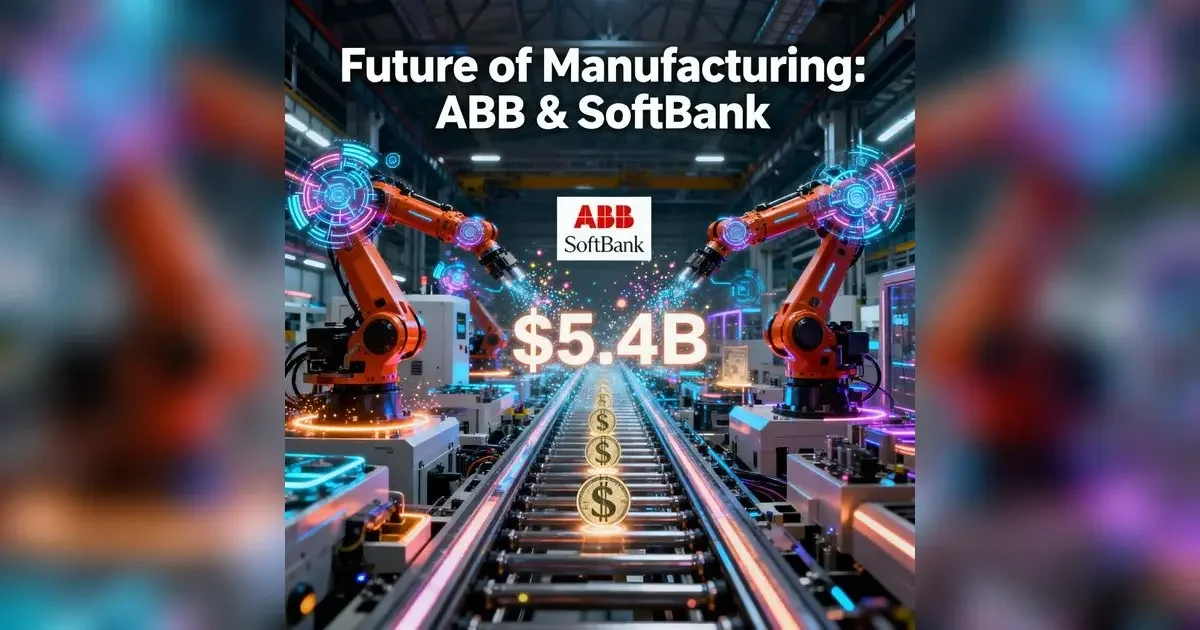SoftBank + ABB Robotics: Why this matters for India (and everyone else)
If you’ve ever watched a car being welded by perfectly synchronized robot arms, there’s a decent chance ABB had something to do with it. ABB Robotics is a top-tier supplier of industrial robots across auto, electronics, logistics, and even food processing. By snapping it up, SoftBank isn’t dabbling—it’s buying a production-grade bridge between the cloud models we keep hyping and the messy physical world where value is actually created. The price tag? Roughly $5.375–$5.4 billion, structured via a carve-out that SoftBank will acquire as a new holding company, pending regulatory approvals. Closing is targeted for mid-to-late 2026.
A small but crucial footnote: ABB had long teased a spin-off/IPO for this division. That plan is now in the bin. Instead of floating the business, ABB is taking the cash—and signalling it wants to focus elsewhere while returning value to shareholders. In plain English: ABB gets optionality and cleaner financials; SoftBank gets the robots and a mature revenue engine.
The strategy: giving AI a job description, not just a dataset
SoftBank has been clear about its “Physical AI” push: tie together chips, data centers, generative models, and robots into one pipeline that can sense, decide, and act. If you followed Pepper (remember that “emotional robot” that mostly became a selfie partner?), you know SoftBank has stumbled before. The difference this time is domain: ABB’s robots are not toys—they’re factory-grade, safety-certified, and already deployed by the thousands. That instantly fixes the “last mile of AI” problem—moving from impressive demos to reliable, scalable deployment.
What could this unlock?
· RaaS (Robotics-as-a-Service): SoftBank’s capital and platform mindset + ABB’s install base could birth subscription robots. Think per-hour robot welding or per-package picking—OPEx instead of CAPEx.
· Model-to-Motion loop: Train a task in simulation or with foundation models, deploy to fleets, collect telemetry, improve models, repeat. Owning both the models and the motion layer compounds learning advantages.
· Vertical bundles: Full-stack “AI production cells” for EVs, electronics, and even warehousing. Hardware + software + financing, sold as a single product.
Implications for India
India’s manufacturing goals (PLI schemes, electronics, EVs, solar) are colliding with labor shortages for highly repetitive, precision tasks and a relentless quality bar. A SoftBank-backed ABB could make advanced automation more accessible here in three ways:
1. Lower upfront costs: If SoftBank pushes RaaS, Indian MSMEs could rent capability instead of buying bulky cells. That’s big for Tier-2/3 suppliers chasing global quality audits.
2. Faster commissioning: Pre-trained task libraries (screwdriving, palletizing, inspection) reduce the need for scarce robot programmers and cut integration time from months to weeks.
3. Supply-chain resilience: With AI-driven scheduling and robot re-tasking, plants can pivot faster—handy when a single chip shortage can wreck your quarter.
For India’s tech ecosystem, expect systems integrators (SIs) to be the quiet winners. Whoever can stitch ABB hardware, Indian machine vision, and cloud AI into turnkey lines will own the margin. Keep an eye on partnerships between ABB’s local channel, hyperscalers, and Indian automation startups.
Risks (because reality doesn’t read press releases)
· Regulatory maze: Multi-jurisdiction approvals can drag; mid-to-late 2026 is the current target, not a promise. Integration risk rises with time.
· Cycle exposure: Robots are cyclical. If global capex tightens or EV demand wobbles, order books get thin.
· Culture clash: ABB’s engineering-first DNA meets SoftBank’s venture-style velocity. That can be rocket fuel—or a rough Monday.
· Competitor response: FANUC, Yaskawa, KUKA, and Chinese upstarts won’t sit still. Expect price competition in lower-end arms and a talent arms race in software.
How the value could be realized
Short term (0–12 months): Announce integration roadmap, protect customer confidence, and offer migration paths for existing ABB software stacks (SafeMove, RobotStudio, etc.).
Mid term (12–24 months): Launch RaaS pilots in logistics and electronics assembly; bundle robot cells with cloud inference credits and service SLAs.
Long term (24–48 months): Build a “robot app store”—certified skills you can deploy to any ABB arm with minimal re-teaching. This is where Physical AI becomes an actual platform, not just a slogan.
Bottom line
SoftBank didn’t just buy a robotics brand; it bought distribution, trust, and time—the three things most AI-robotics startups never get. If the company can keep ABB’s reliability while injecting a platform business model on top, we’ll look back at this as the deal that made AI useful in factories, not just in slide decks. For India, it’s a nudge to move faster: train more robot integrators, incentivize flexible automation, and build local component supply so we’re not just installing robots—we’re exporting the playbook that runs them.
Key facts at a glance: SoftBank is acquiring ABB’s robotics division for ~$5.4B via a carve-out; ABB drops its planned spin-off; closing expected mid-to-late 2026; the move fits SoftBank’s “Physical AI” strategy.
